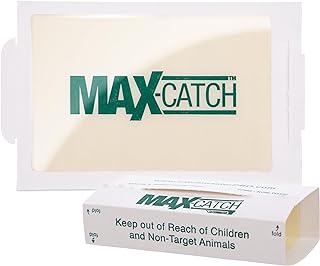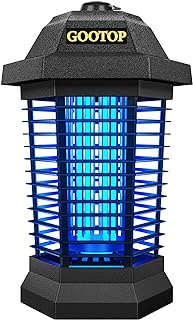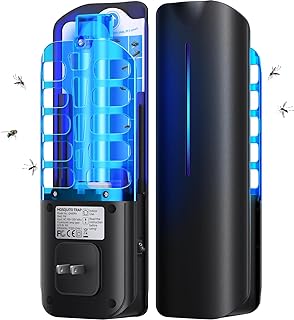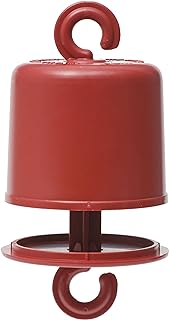5 important factors worth considering when looking for the best lizard traps
Buying lizard traps can be overwhelming due to the many options available. Understanding key factors is crucial to making the right choice. The design, size, material, and effectiveness of the trap all play a big role in how well it works. By learning about these factors, you can make a smart decision that meets your needs and helps control your lizard problem.
See our guide to the best lizard traps.
Trap size and design
When setting up traps for lizards, it’s important to think about their safety and well-being. Choosing traps with enough room allows lizards to move around comfortably and reduces their stress. A bigger trap not only keeps the lizard healthy but also increases the chance of catching it. Also, picking traps with good airflow and smooth edges lowers the risk of the lizard getting hurt, making the trapping process more humane.
In addition, how well the trap works depends on how it’s designed. Getting traps with see-through walls or windows helps you see the lizard inside without bothering it too much. It’s also helpful to use traps that make it easy to put bait in and take it out, making trapping quicker and easier for both you and the lizard. Finding the right balance between safety, comfort, and practicality in trap size and design is crucial for a smooth and ethical trapping experience with lizards.
Durability and materials
When buying lizard traps, it’s important to consider durability and the quality of materials used. Traps made of strong materials like galvanized steel or durable plastic will last a long time, even in tough weather. Choosing high-quality materials shows a commitment to trapping humanely and effectively. While cheaper traps may seem like a good deal, they often don’t last and can harm the environment.
Durability is key for effective lizard traps. A well-made trap not only lasts longer but also works better, increasing the chances of catching lizards. By picking traps made of durable materials, you ensure better performance and support sustainable trapping methods that value lasting quality over throwaway options. In lizard trapping, durability and materials are crucial for ethical and successful trapping efforts.
Bait placement and type
When setting up traps to catch lizards, it’s important to consider where and what kind of bait to use. To catch lizards successfully, you need to know their habits and what they like. Lizards have a strong sense of smell and taste, so they are attracted to many types of bait, like bugs, fruit, or special lizard food. Placing the bait in the right spot is key, as it can make a big difference in how well your trapping works. Lizards are cautious animals, so they will be more interested in bait placed where they feel safe and hidden, like near their hiding spots or along their usual paths. Choosing the right bait and putting it in the right place can help you catch more lizards and reach your trapping goals faster.
Trying out different baits and placements can be a fun way to improve your trapping skills and catch more lizards. Watching how local lizards behave and adjusting your baiting strategy accordingly can lead to better results. It’s important to be patient and keep trying different baits and placements until you find what works best for your situation. By taking the time to learn about bait and placement, you can get better at trapping lizards and increase your chances of catching the ones you’re after.
Safety features
When designing lizard traps, it is crucial to prioritize safety measures that are humane for the animals. It is important to respect and consider the well-being of the creatures caught in traps. This not only shows ethical responsibility but also ensures that the traps are effective in their purpose. By using features like smooth edges, non-toxic materials, and proper ventilation, manufacturers can show their commitment to both humane standards and functional excellence.
In addition, safety features should also consider protecting other animals and the environment. Lizard traps should be carefully made to minimize harm to unintended targets like wildlife, pets, and ecosystems. By including features such as secure locking systems, selective entry points, and biodegradable materials, traps can be important tools in pest control while also preserving ecological balance.
Ultimately, investing in lizard traps that prioritize safety demonstrates a combination of compassion, efficiency, and environmental care. This reflects responsible consumer choices in today’s interconnected world.
Ease of use and maintenance
When considering buying lizard traps, it’s important to think about how easy they are to use and take care of so they work well at catching unwanted reptiles. Choosing traps with a simple design can make catching lizards a lot easier, especially for those who are new to trapping or want a hassle-free option. Traps with easy set-up and clear instructions can make a big difference in how well they work, making sure they catch lizards with little effort and good results.
It’s also crucial to keep up with maintaining the traps to make sure they last long and work well. Choosing traps made from strong materials that are easy to clean and take care of can make a big impact on how well the traps work over time. Regularly cleaning and checking the traps for damage can help prevent any issues that might stop them from catching lizards effectively. By picking traps that are easy to use and don’t need a lot of maintenance, homeowners can make sure they have a reliable and efficient way to deal with lizard problems easily.
Conclusion
Using lizard traps presents ethical dilemmas regarding the relationship between human convenience and protecting wildlife. We must think about how our actions impact nature as we strive to live alongside it. While it may be tempting to get rid of pests, we must realize that ecosystems are interconnected and it is our duty to care for the environment. By valuing all creatures and considering their importance, we can find ways to meet our needs while also preserving nature for the future. Want more info on piping bag for deviled eggs, check the best piping bag for deviled eggs.




